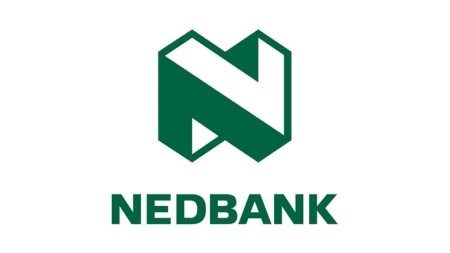**The residential property market continues to be buoyant, although the
growth in house prices has softened substantially from last year's peak.**
In February, for example, house prices grew by 21.95% from the year before
compared with growth in excess of 36% towards the end of 2004. But as usual,
these aggregated growth rates mask noticeable differences across provinces. For
example, there has been continuous and gradual acceleration in property price
growth in Gauteng, while there has been substantially more volatility in the
growth of property prices in the Eastern Cape and Limpopo. In contrast, house
price growth in the Free State appears to have remained relatively low and
stable until it experienced a sharp increase in 2005.
Provincial house price growth
This suggests that although national factors may have a similar impact on
provincial property markets, each province is nevertheless susceptible to its
own internal factors, which in turn contribute to determining its reaction to
nationwide factors such as the increasing popularity of property as an
investment. While some of the key drivers of house prices, notably interest
rates, are the same across the country, the provincial differences such as
income are expected to cause variation in house price behaviour across the
provinces.
Indeed, provinces such as the Eastern Cape and North West have similar income
levels (around R20 000 per capita) and similar house prices (x and x
respectively). Elsewhere, however, the expected positive relationship between
house prices and income appears to be absent. For example, KwaZulu-Natal (KZN)
and the Free State enjoy similar income per capita levels (R29 942 and R26 975
per year respectively), although their average house prices differ markedly
(R351 313 and R262 596 respectively). Similarly, Limpopo and the Western Cape
have similar average house prices (R368 333 and R360 000 median house prices
respectively), but their income per capita differs substantially (R211 395 and
R247 500 respectively).
*Average house prices and annual income per capita (2004) *
This suggests that there are more factors contributing to house prices in
different provinces. For example, in the two instances mentioned earlier, the
differences in urban/rural status could play a meaningful role, while factors
such as the presence of tourists in KZN, for example, could contribute to
different house price growth. Factors other than income that could cause
differences across regions include the extent of urbanisation, the role of
tourism and foreign home ownership, and other economic factors such as the
structure of production in the local economy and spatial phenomena.
Some recent provincial trends include:
The Western Cape experienced relatively strong house price growth
in 2000 and 2002 before it levelled off in 2003 and 2004. House prices
subsequently rose rapidly during the latter part of 2004 and in 2005. The
strong increase in prices and activity in 2002 could have been influenced by
the sharp depreciation of the rand exchange rate towards the end of 2001,
especially since foreigners and tourists play an important role in this
region. For example, in 2002 almost a third of the South African residential
properties bought by foreigners were in the Western Cape. The subsequent
decline in activity in the previous year, combined with very high prices and
price growth, may reflect the relatively limited supply of houses in this
region, which enables sellers to raise prices.
House price growth in the Eastern Cape remained on a steady path
during 2005, growing at 33% in the third quarter. There was a decline in the
number of houses sold (as in all other provinces) but it still ended at a
level in line with the number of houses sold between 1999 and 2001,
suggesting that the market has probably been normalising rather than
collapsing. This region is relatively poor, with the second lowest income
per capita (R20 845 in 2003, second only to the North West with an income of
R19 651 per capita) as well as the second highest proportion of people
living in poverty (36%, following 38.1% in the Northern Cape).
The Northern Cape includes a large rural area and, as such,
property prices tend to be relatively low compared to more urbanised
provinces. For example, its median house price of R247 500 in the third
quarter of the previous year was well below that of Gauteng (R411 395). This
is also a relatively stable market, perhaps less influenced by economic
changes than, say, Gauteng. Over this period, the Northern Cape recorded a
relatively stable growth path (apart from the growth spike in the third
quarter of 2005) and also less fluctuation in the number of transfers taking
place.
The Free State recorded an increase in house price growth of
almost 50% in the third quarter of 2005. This experience is similar to that
of the Northern Cape, where generally stable growth rates were followed by a
catch-up period. Also (and again in line with the Northern Cape experience),
the Free State saw a decline in the number of houses sold, but this was less
steep than in most other provinces. This suggests that although the Free
State experienced the effects of the boom in the property market, it was not
affected as much as other provinces were.
KwaZulu-Natal's housing market includes a large number of coastal
properties, which generally sell at a premium relative to inland property.
Consequently, its median house price of R295 000 in the third quarter of
2005 exceeded that in all provinces except Gauteng (R411 395). House price
growth of more than 55% was recorded in the third quarter of 2005. The
number of houses sold declined following a spike in 2002, which could, as in
the Western Cape, at least partly have been the result of a relatively weak
exchange rate, which spurred purchases by foreigners.
The growth path of house prices in North West Province differs
from most provinces. The province recorded above-average growth prior to the
recent property market boom, with house price growth close to 20% during
2001 and 2002. Thereafter, growth surged in 2004 before subsiding in 2005,
when the national house price growth rate peaked. This can be at least
partly attributed to movements in the rand exchange rate and commodity
prices, which play a crucial role in the mining sector that in turn is an
important driver of the economy of the North West Province.
Gauteng recorded house price growth of 48% during the third
quarter of 2005. This follows more than five years of strong growth.
Although the correlation between economic and house price growth is
generally not very strong, the stability in house price growth in this
province is in line with its economic growth path, which has been less
volatile than in other provinces. Gauteng has the highest provincial median
house price of R411 395.
The housing markets of Mpumalanga and Limpopo have
recorded vigorous price growth since 2004, while the drop off in the number
of houses sold in this region corresponds to the national trend in the
property market. Both provinces enjoy relatively stable GDP growth, which
supports the continuous growth in house prices.
The outlook
House prices continue to be supported by relatively sound consumer
fundamentals and a benign economic outlook. Despite a rise since the end of
2002, South Africa's household debt repayment to income ratio is still not
punishingly high, which suggests that they have some scope to further increase
their exposure to the housing market. However, their rate of debt accumulation
could slow in due course. Further consolidation in house price growth is
expected next year as a result of the reduction in pent-up demand after several
years of brisk buying; the fading impact of previous interest rate cuts; and
recent above-trend growth that has created a high base from which future growth
rates will be calculated. Nevertheless, nominal income is expected to grow at
around 10% this year. Since house prices are not inaccessible, they should at
least keep pace with this growth in income.



